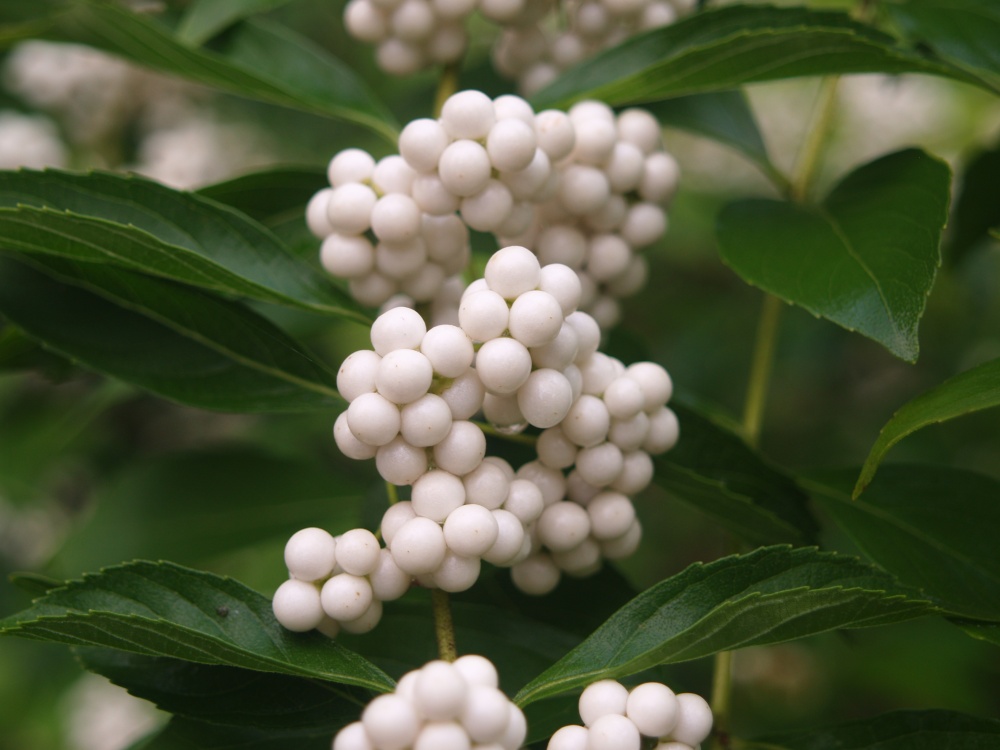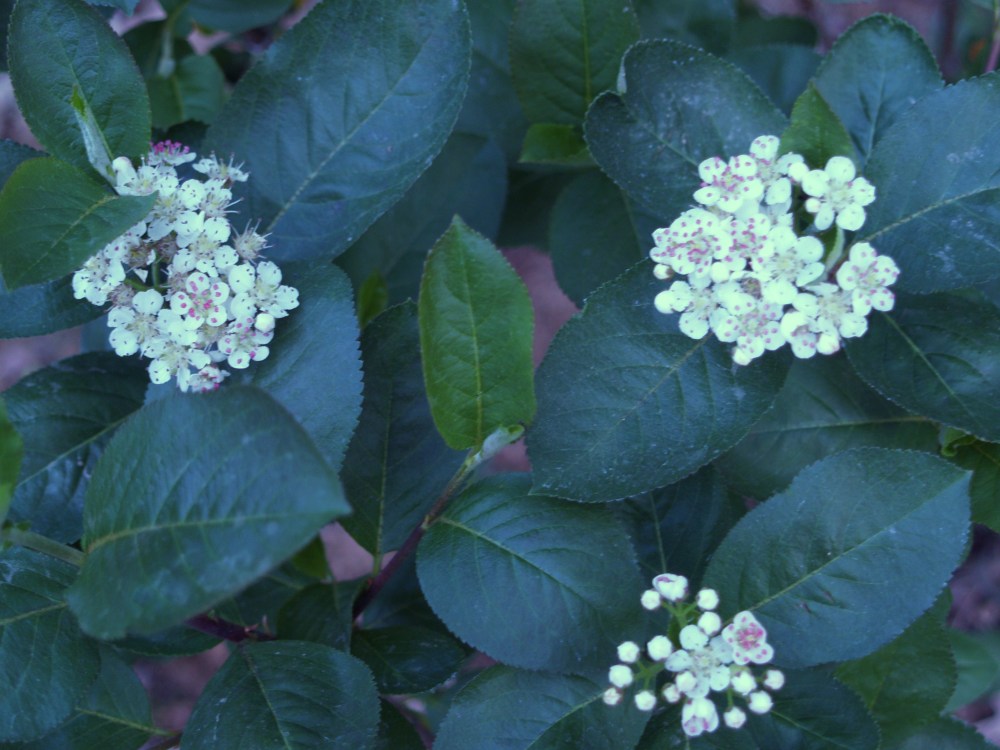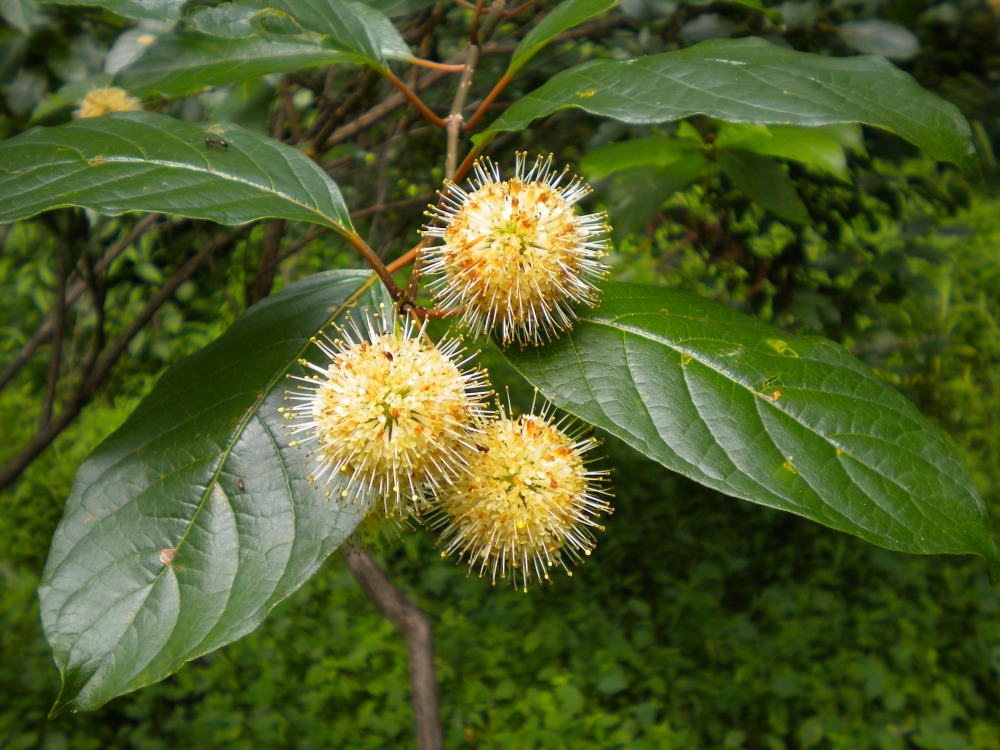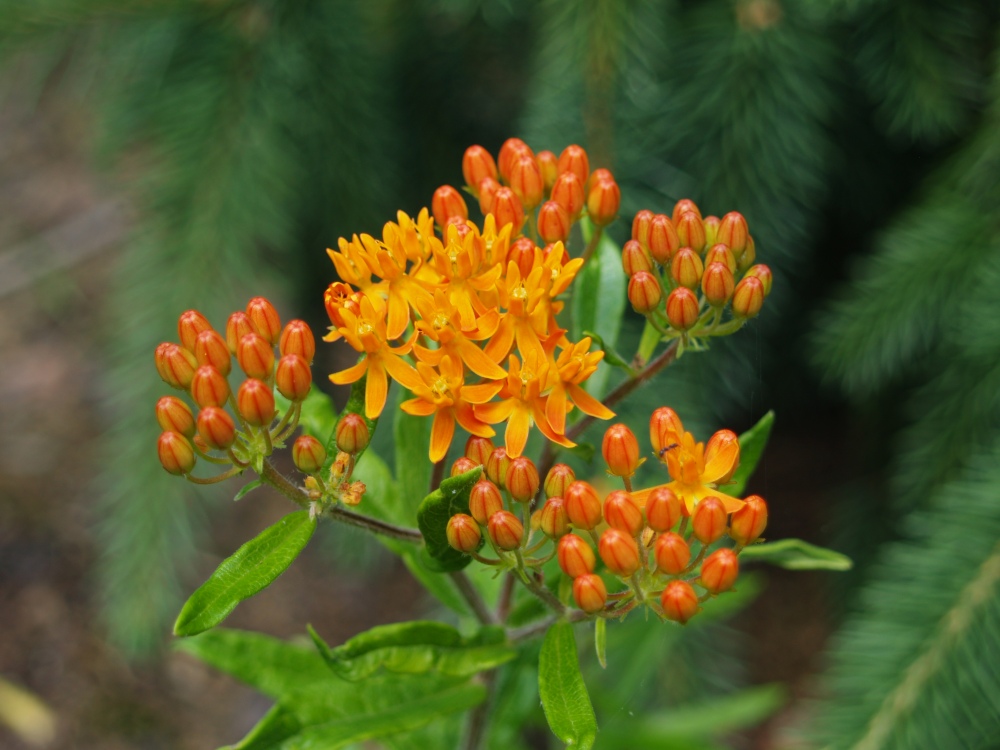The back half of the rear garden is prone to wet soils through the spring, or in any period with an inch or more rainfall in a week. In September last year there was more than a foot of rain from various hurricanes and tropical storms, and this part of the garden stayed waterlogged into November. A few plants that resent the prolonged dampness had troubles, and with repeated heavy rains in recent weeks a few perennials that were already weakened have given up and drowned.
One border of the rear garden parallels the forest so that it’s shaded until mid-afternoon, and here there is a depression that drains a portion of the property. It also drains a trickle of a spring so that the area remains damp into the hottest summer days, and often there is a bit of standing water. Digging a hole in this area is a bit tricky to avoid being sucked down into the swamp, but small perennials are usually planted by pushing them into the mud without having to dig. Most often evergreens are a bad bet for wet areas, but a tall evergreen holly and two western cedars have flourished planted slightly to the high sides of the drainage swale. These further shade the garden, and through the years several plants in this area have demonstrated their lack of tolerance for wet feet, or shade, or the combination of the two.
When I first started the garden the lower end was much drier, then the property developer dug a poorly installed water retention pond just behind my property, and the water table was raised considerably. The area that was just barely damp from the small spring became more wet, and the wet area grew wider. A witch hazel (Hamamelis x intermedia ‘Arnold Promise’, above) was planted long before the retention pond was dug, and as the damp area spread I feared it would not survive. But, it has not been bothered at all by the constant moisture. It is planted a little to the high side, and I don’t know that the witch hazel would survive in standing water, but it seems quite happy and I depend on its cheerful yellow blooms to signal the approach of winter’s end each February.
A wide spreading white beautyberry (Callicarpa dichotoma ‘Albifructus’, above) was planted nearby, and now it is often surrounded by standing water, or at the least saturated soil. It leafs late each spring, and there is considerable dead wood that must be annually pruned, but this is typical of beautyberry in wet or dry conditions. This is not the native purple berried beautyberry (Callicarpa americana), but since the white was happy I’ve planted the native a few feet away and it thrives in a spot that is only slightly drier.
After the installation of the retention pond was botched and the area turned towards swamp I planted a variegated pussy willow (Salix gracilistyla, above) and native river birches to help absorb some of the excess moisture. Both have thrived, but I quickly recognized that this was the perfect spot for the ill mannered pussy willow. It is planted at the rear property line, in damp soil that can only be walked on in the driest periods of summer drought. For any other circumstance the unruly and wide spreading pussy willow is poorly suited. Off an on through the years I’ve gotten close enough to be disappointed by the lack of variegation to its foliage, but during this year’s dry April I managed to wade in close enough to see the variegation of the newest leaves alongside plain green foliage. Unremarkable, and I don’t recommend this monster unless you have a similar waste area to be filled.
In recent years I’ve planted several native shrubs that tolerate moist soil, and several other natives that flourish in wet or dry conditions are spread through the garden. Black chokeberry (Aronia melanocarpa, above) has grown vigorously in swampy soil. I planted several buttonbush (Cephalanthus occidentalis, below) after seeing a patch growing at the base of a local hiking trail that my wife and I visit occasionally. Bees and butterflies were swarming the unusual flowers in mid summer, and in my garden in early June the start of the satellite-shaped blooms is evident. They’ve been planted in the wettest ground and they’re loving it!
I’ve planted the pink flowered summersweet (Clethra alnifolia ‘Ruby Spice’, below) and Virginia sweetspire (Itea virginica) in much drier ground, but both natives will tolerate damp soil in either sun or part shade. Both sucker more vigorously with more moisture, but they have tolerated relatively dry shade without a problem.
A number of perennials have been planted at the edges of this wet area, and some have thrived while others falter and fade after a few years. Japanese irises (Iris ensata) thrive in full sun in shallow water in the garden’s ponds, but they struggle without enough sun between the western cedars and beneath the beautyberry. Ostrich ferns (Matteuccia struthiopteris) grow and spread exuberantly in damp ground (but not into the wettest area) along side native Joe Pye Weed (Eupatorium, or now Eutrochium purpureum), milkweed (Asclepias syriaca, below) and goldenrod (Solidago), and cultivars and hybrids of the native spiderwort (Tradescantia x andersoniana ‘Sweet Kate’). It can be difficult to walk close enough the enjoy their flowers without sucking the shoes off your feet, but a wet area has been salvaged to be as pleasing as any other part of the garden.
I enjoy your blog! How about polygonatum? I have it in damp soil along with aesclepias and rozanne geranium and all seem to be thriving.
My Solomon’s Seal are planted in tough dry shade where they increase in size moderately. I don’t know if they’d take constant dampness. My geraniums pooped out after a few years, I suspect because they needed at least a short period to dry out. I have milkweed growing in dry and wet spots. The ones in damp soil are three times the size, even with a bit less sun than I think they like.